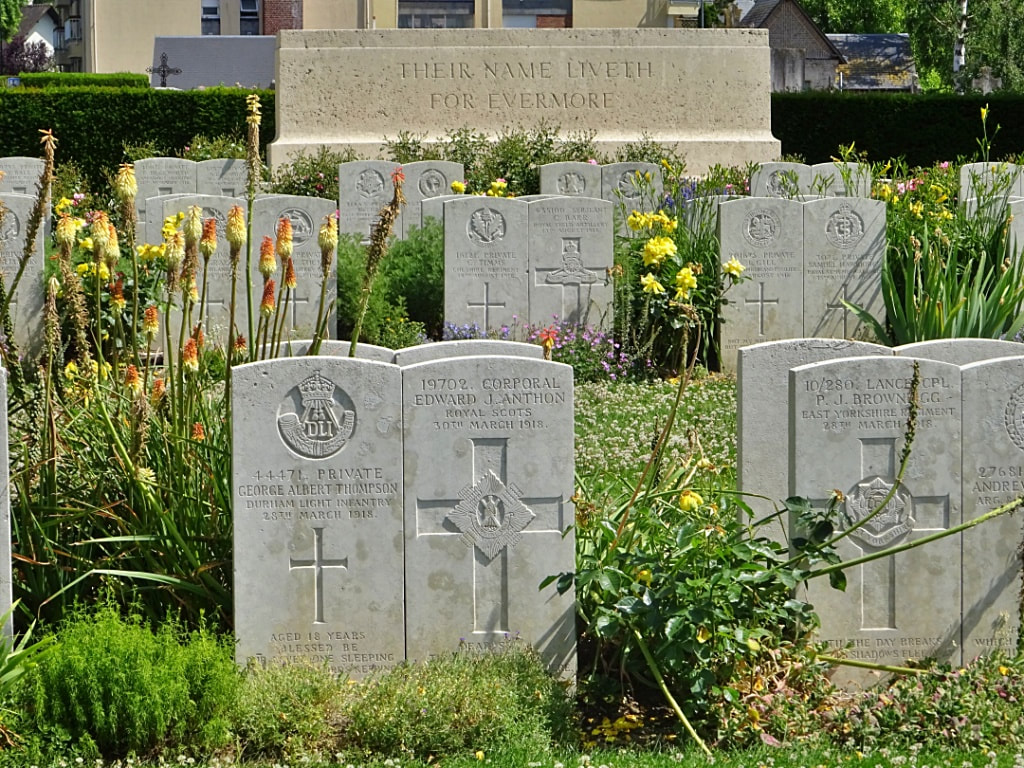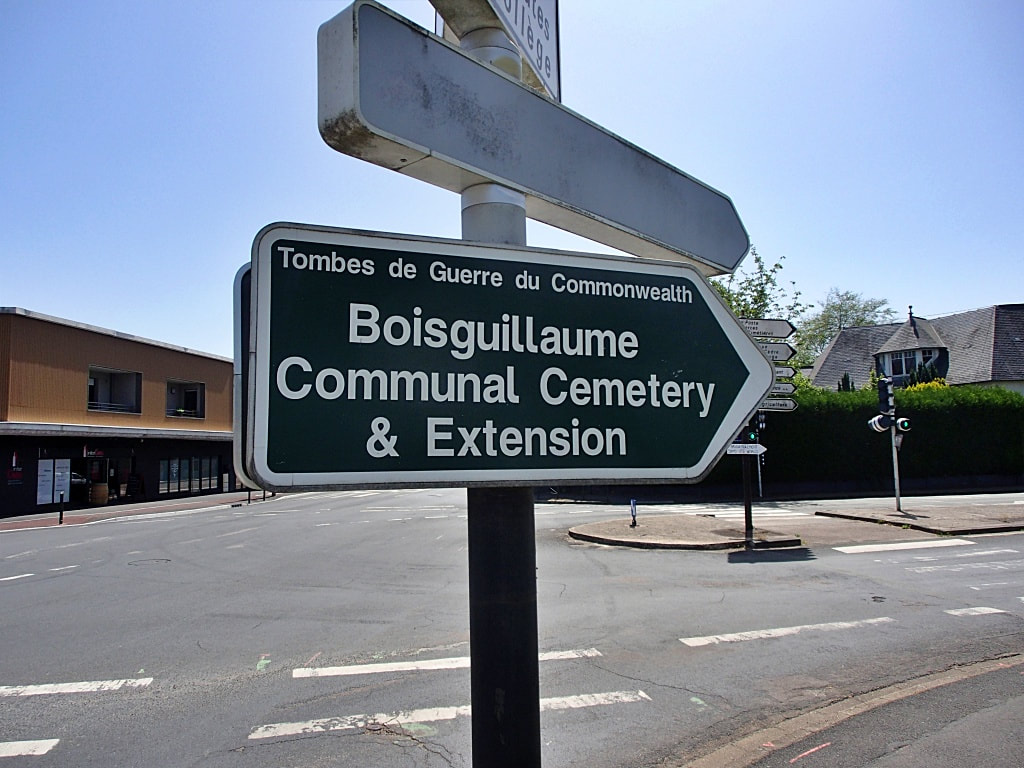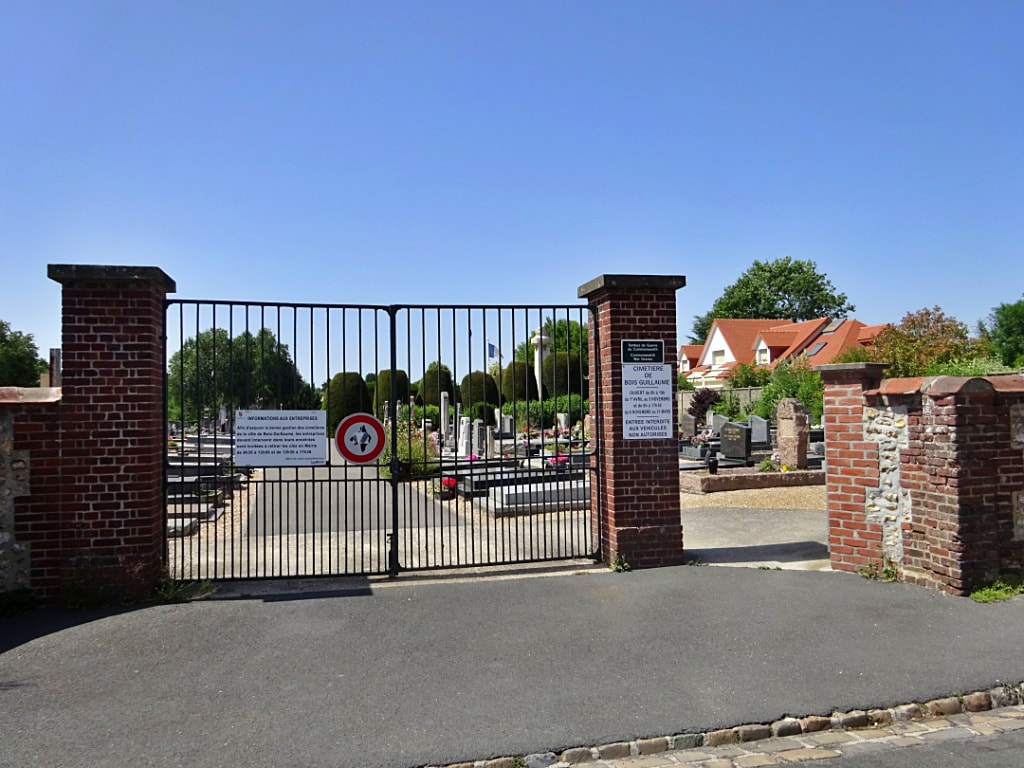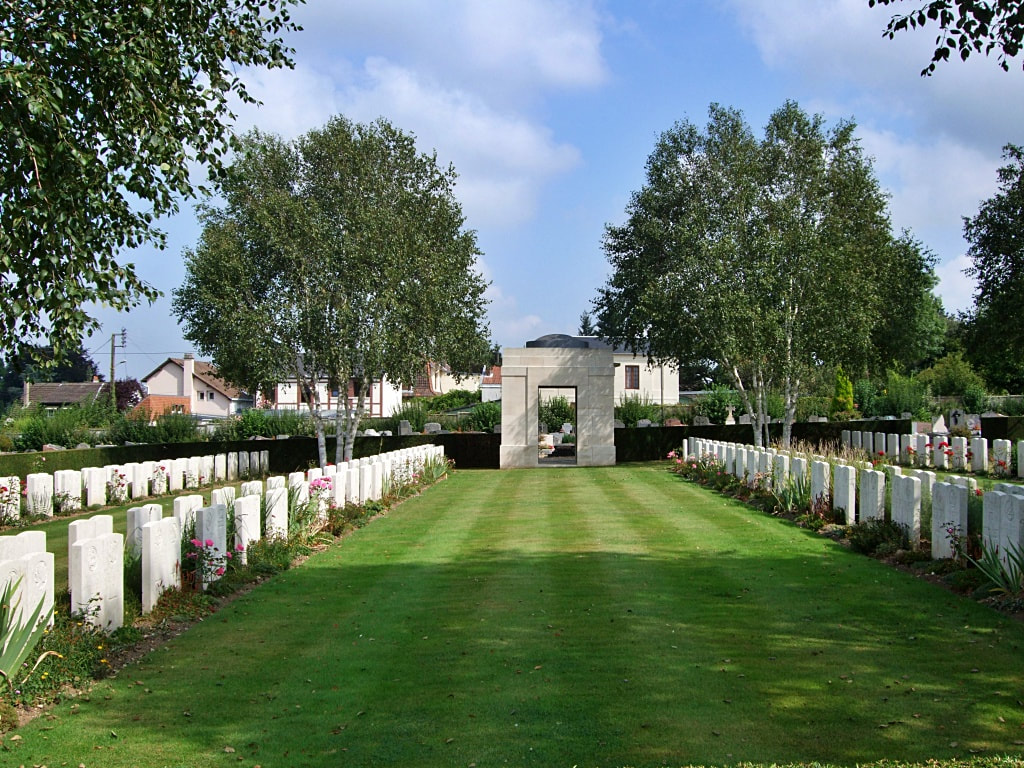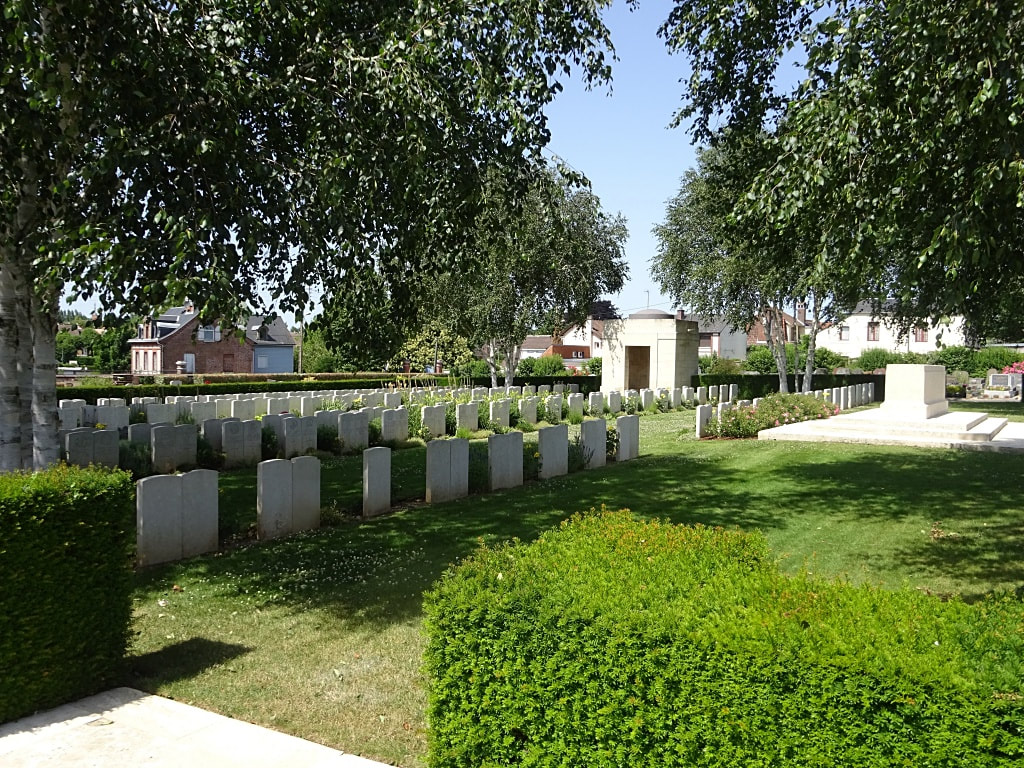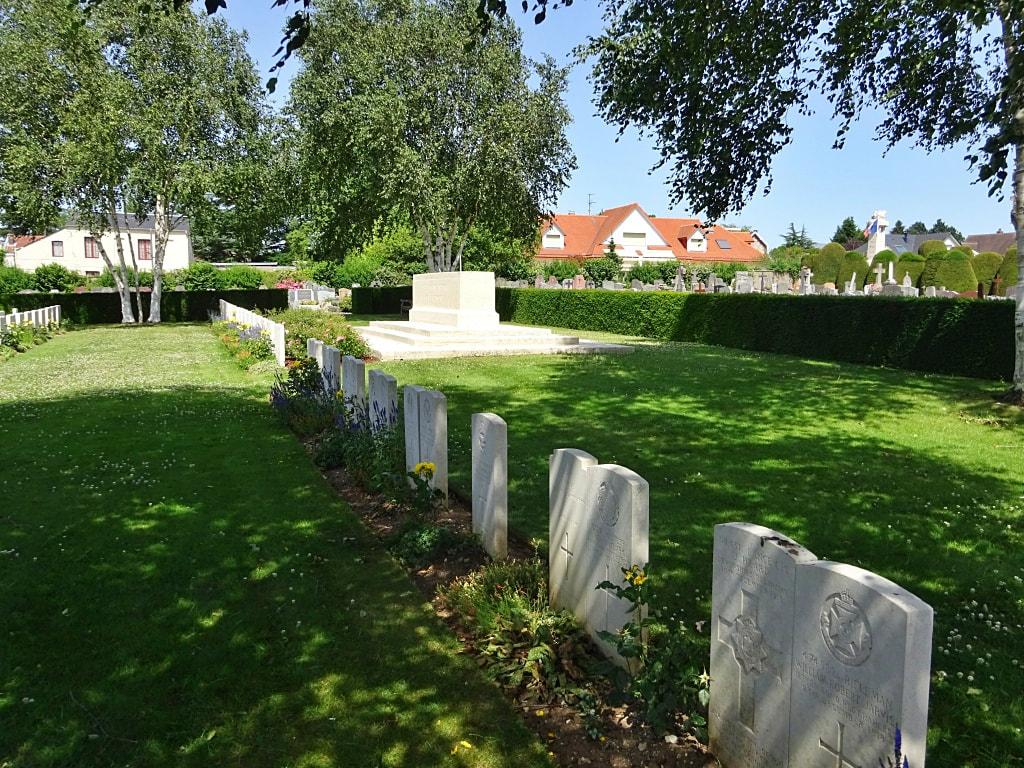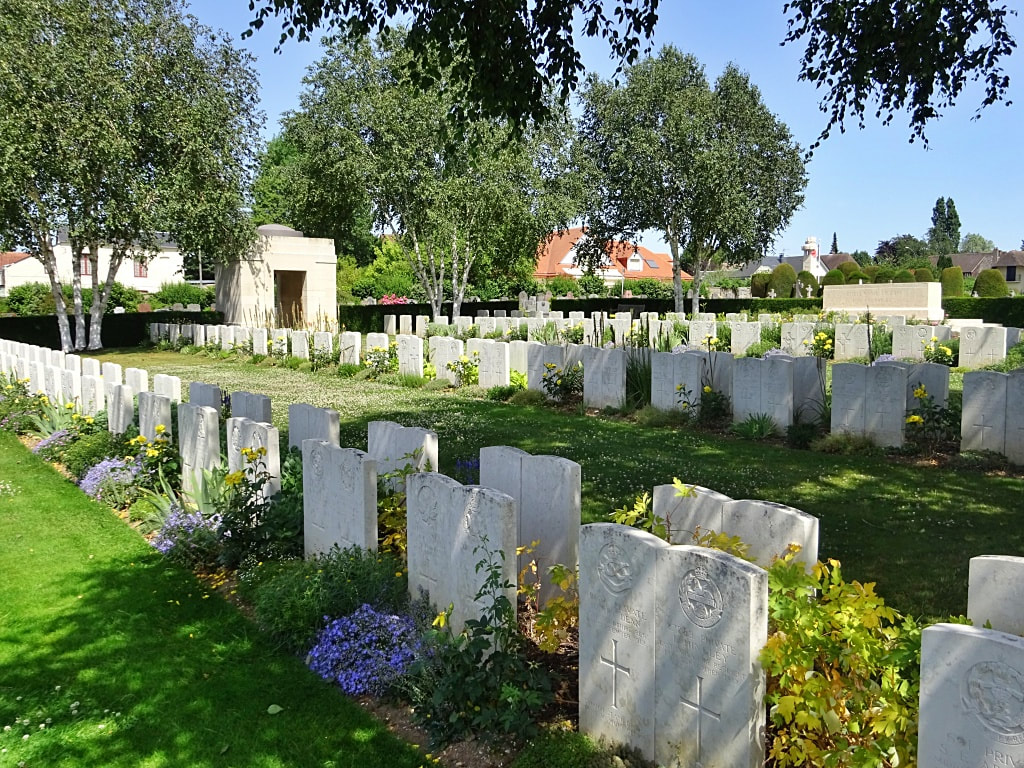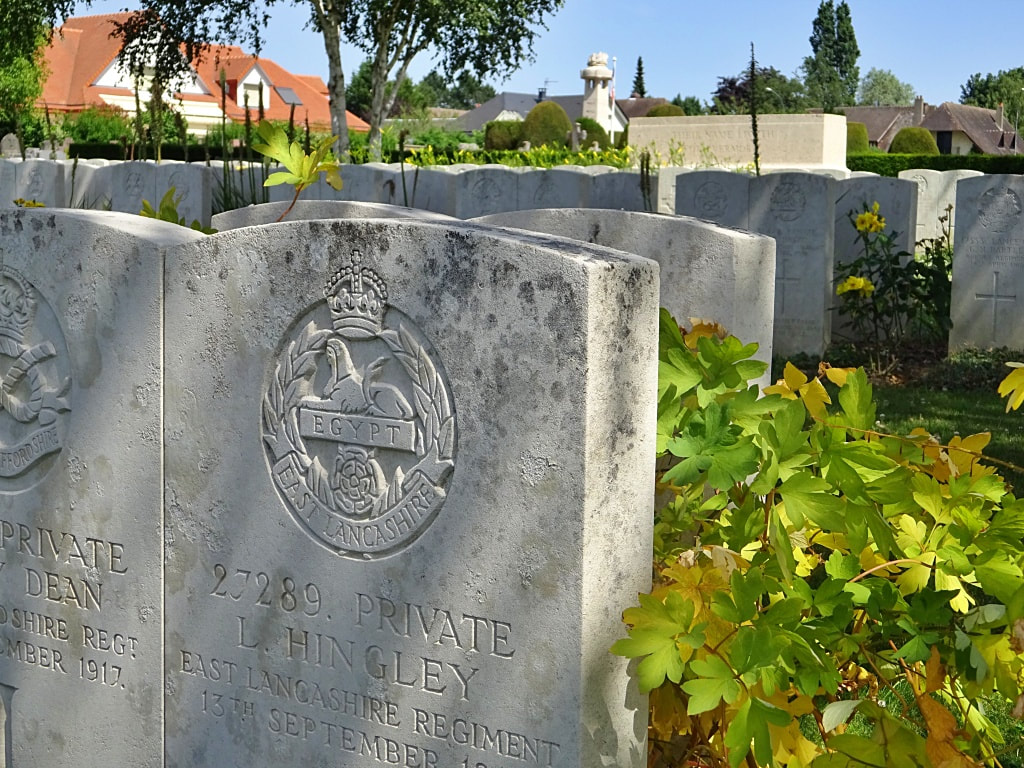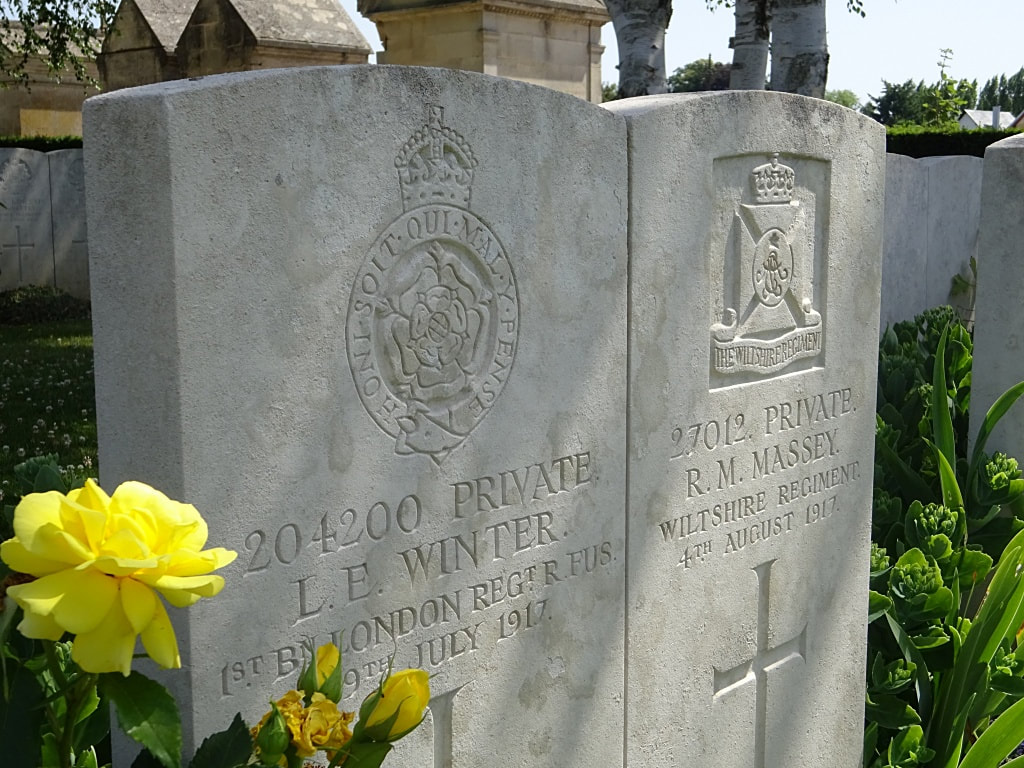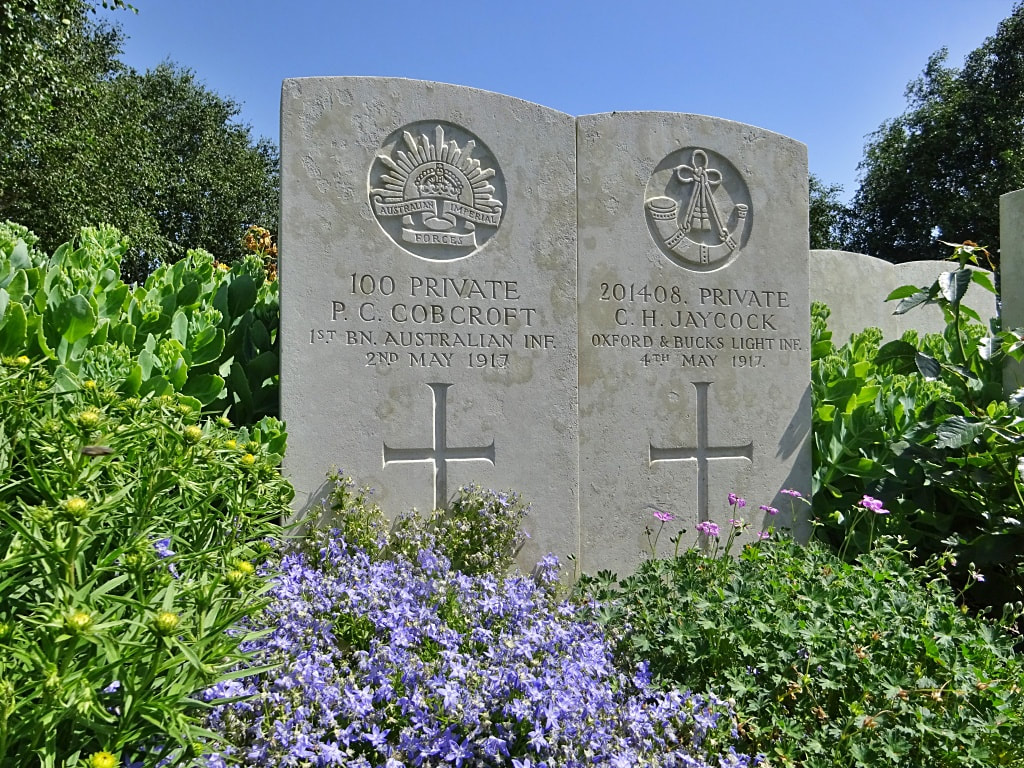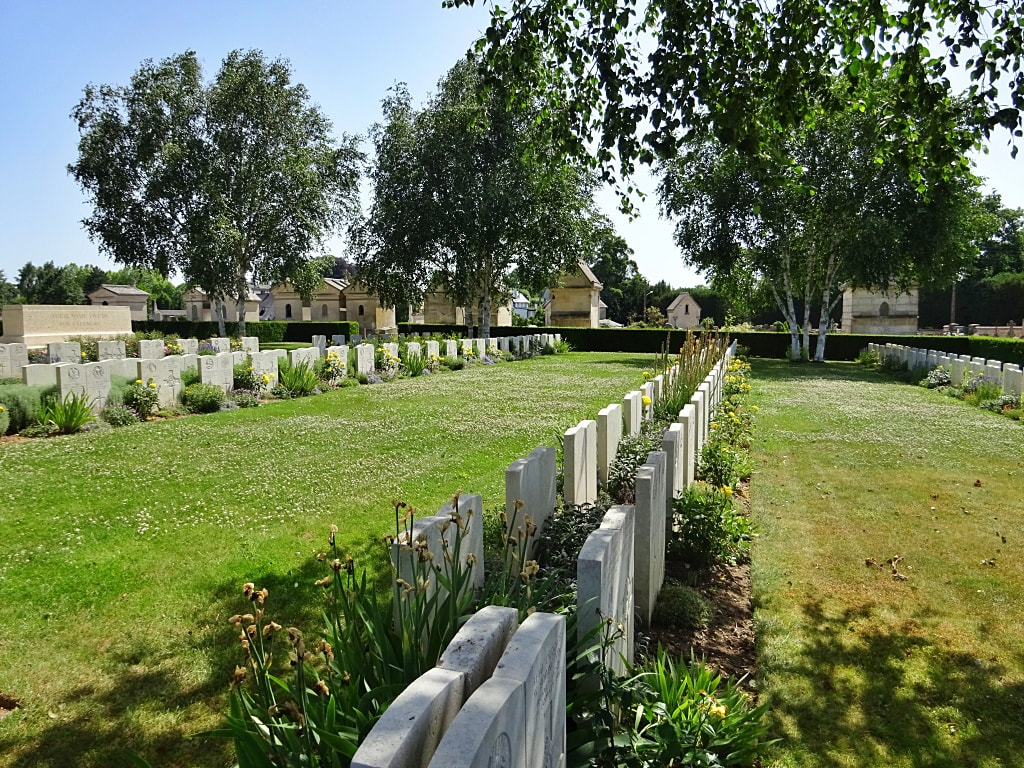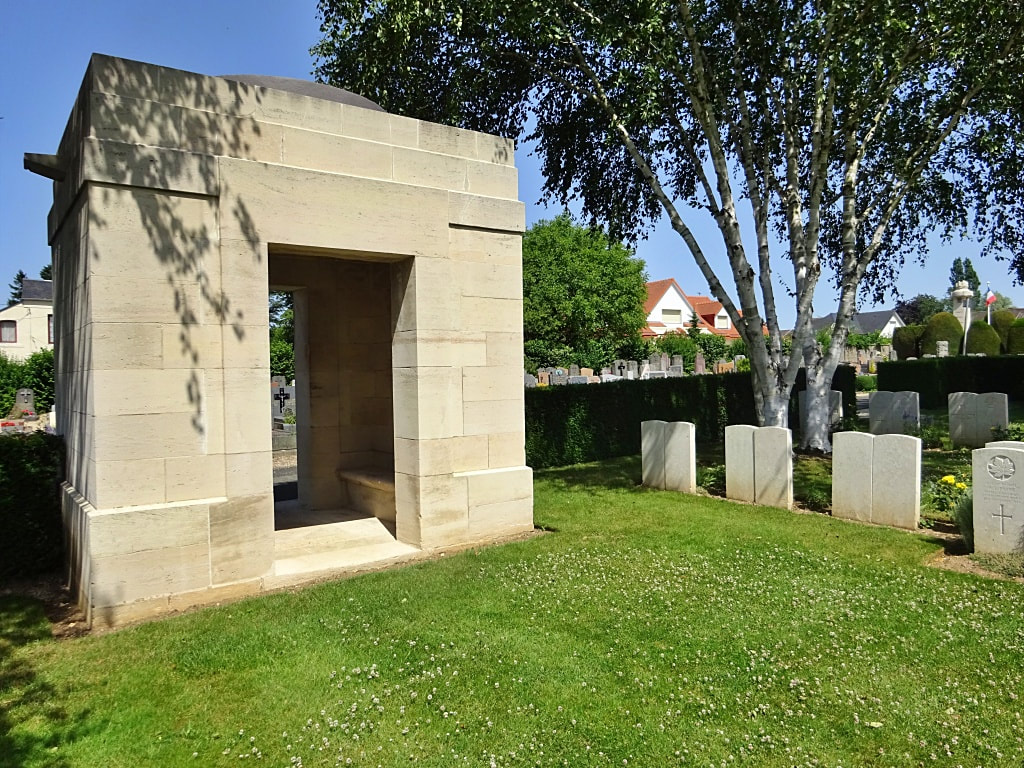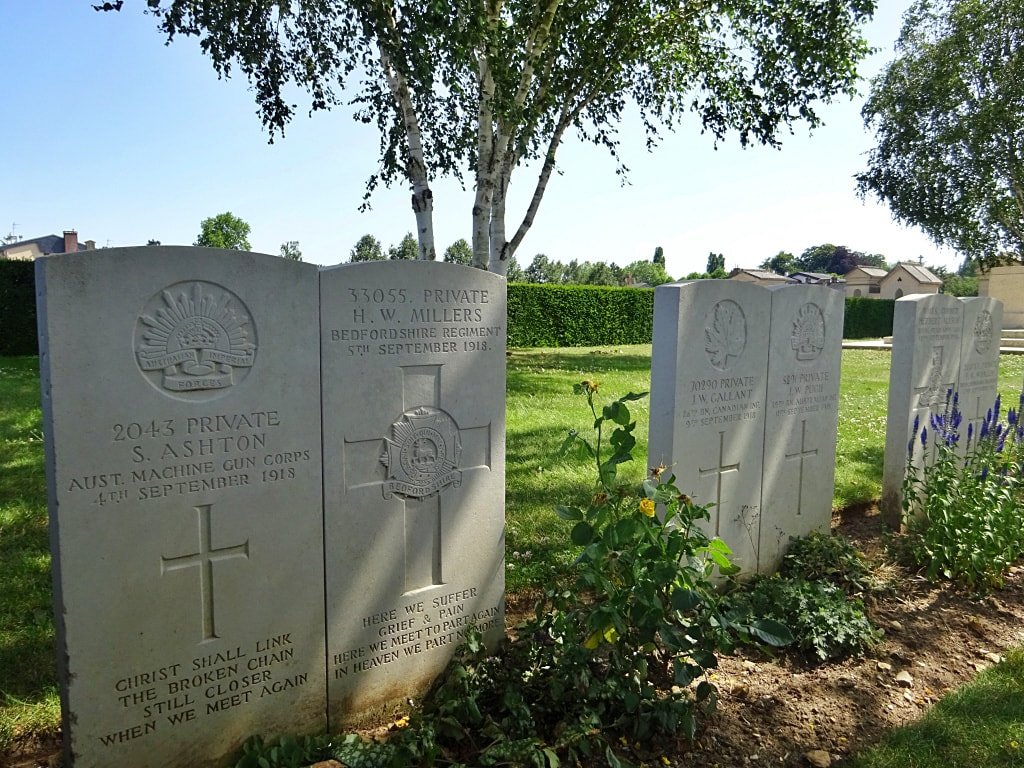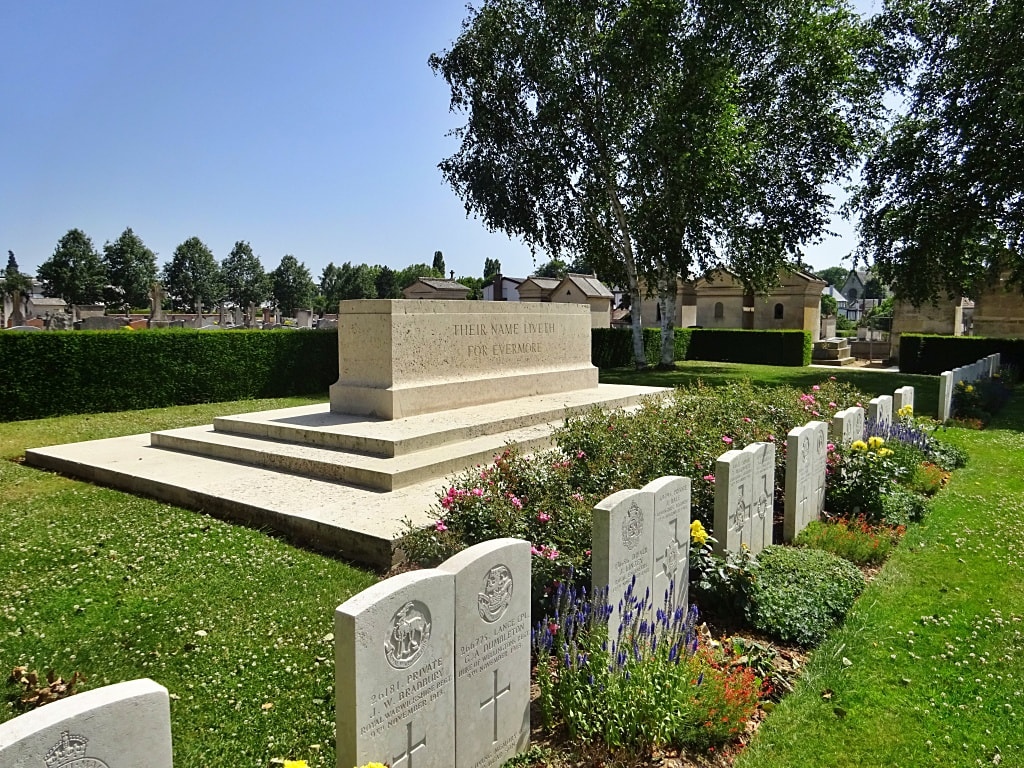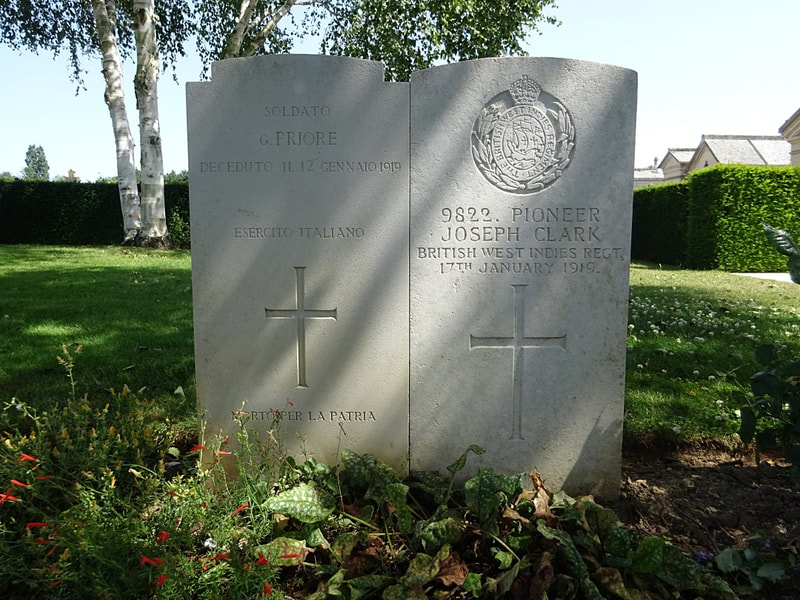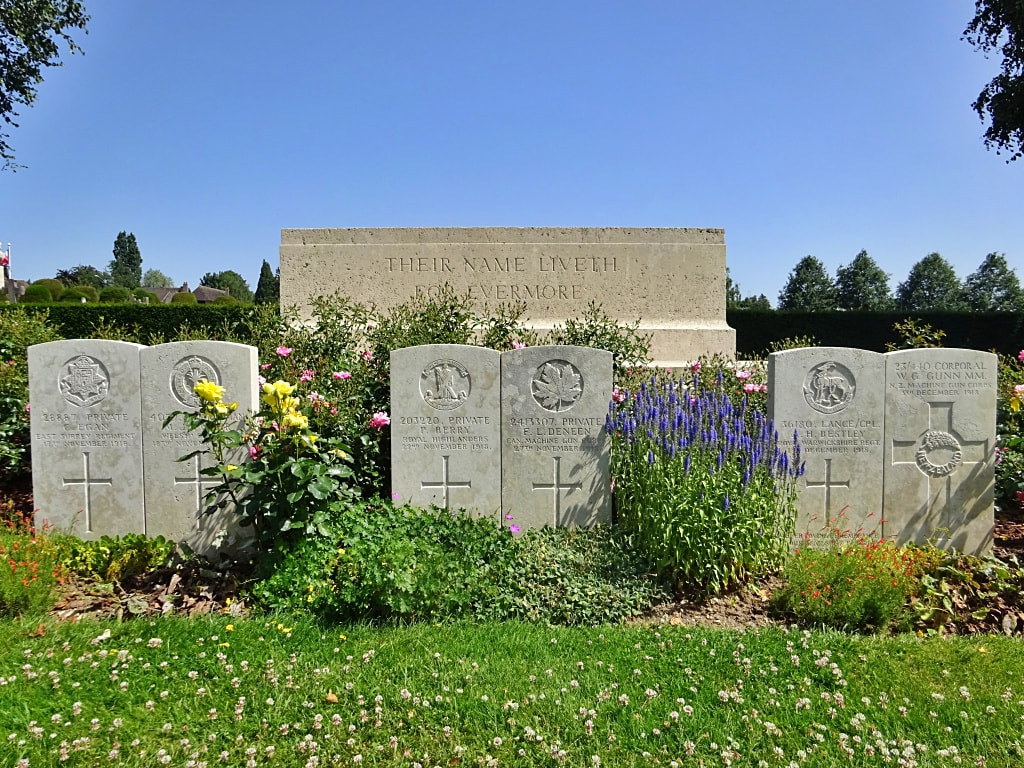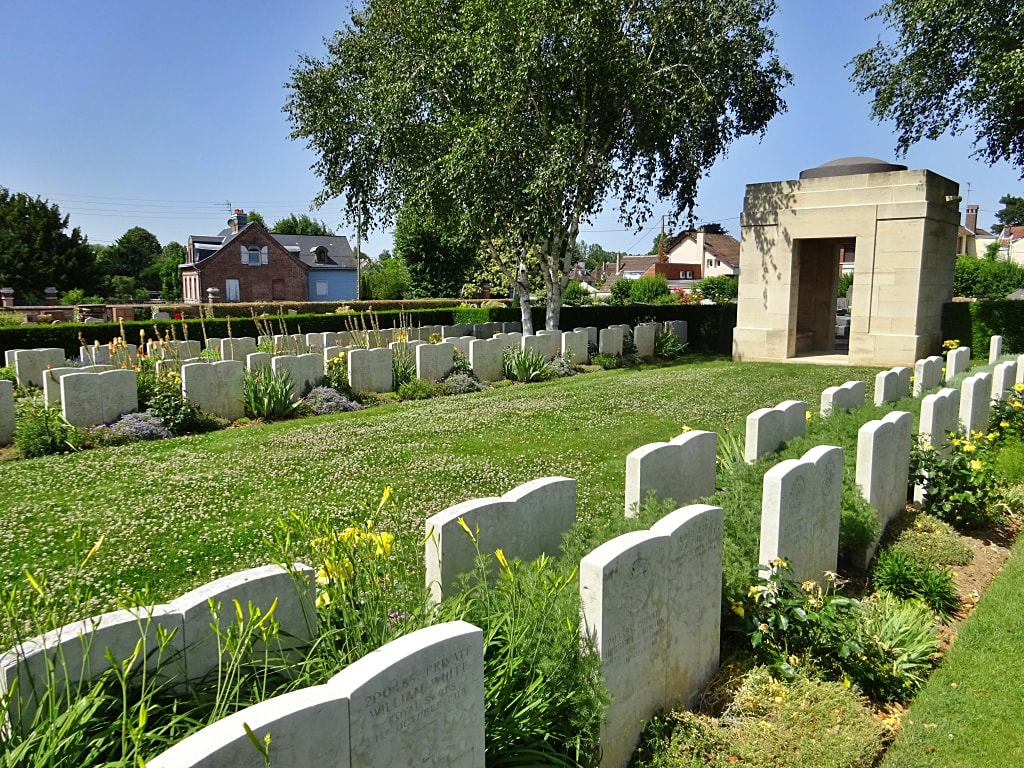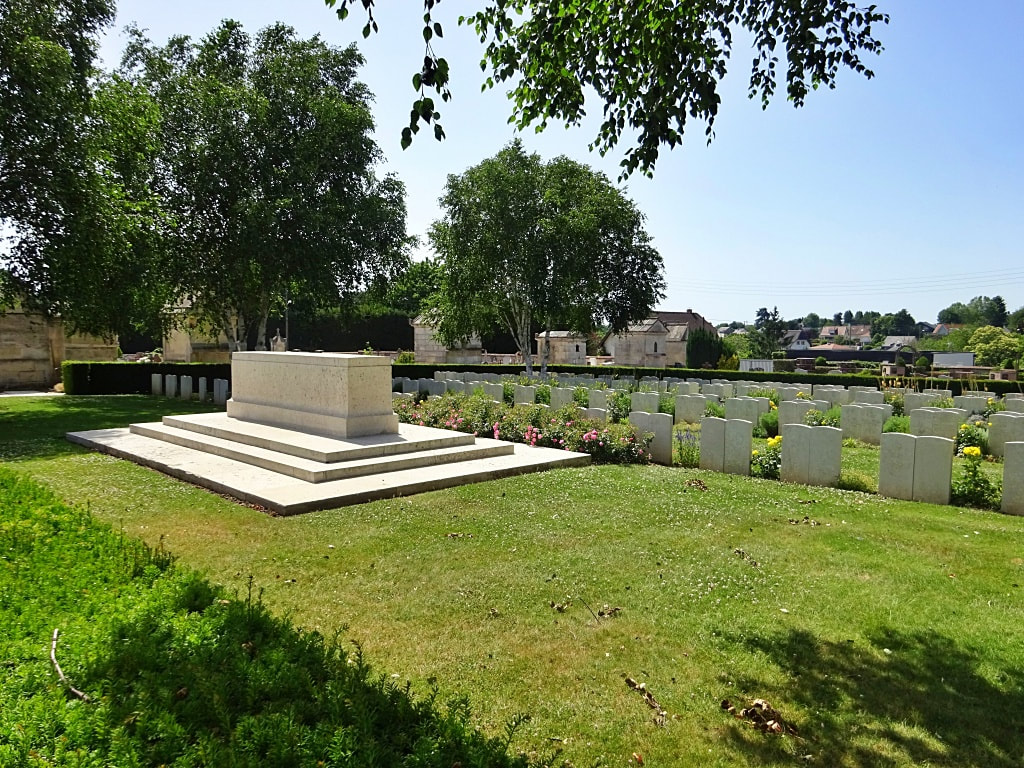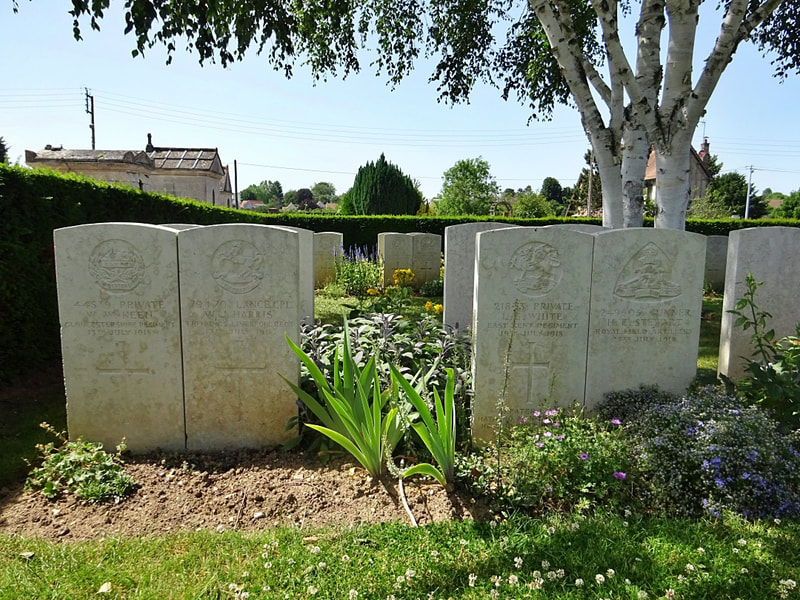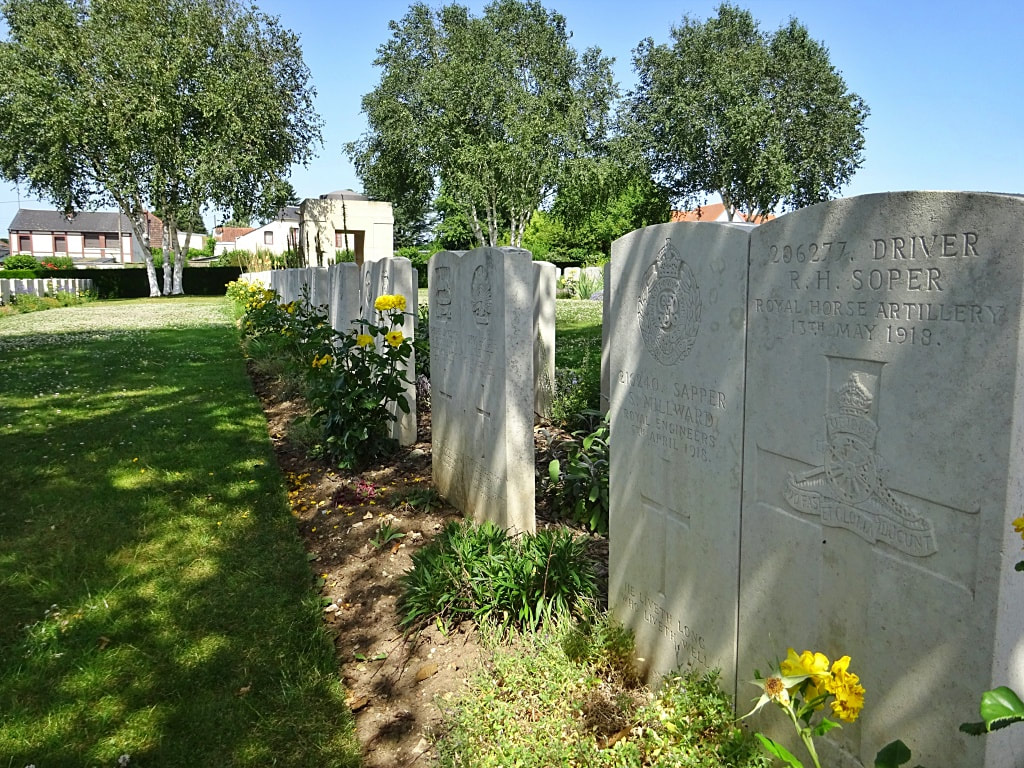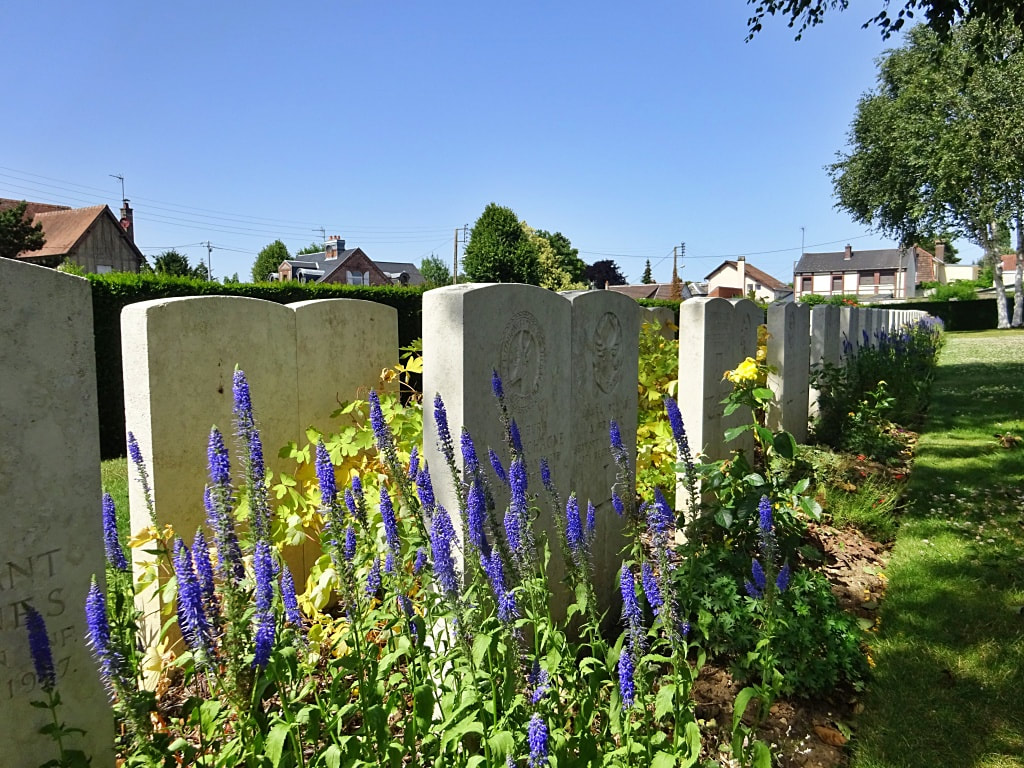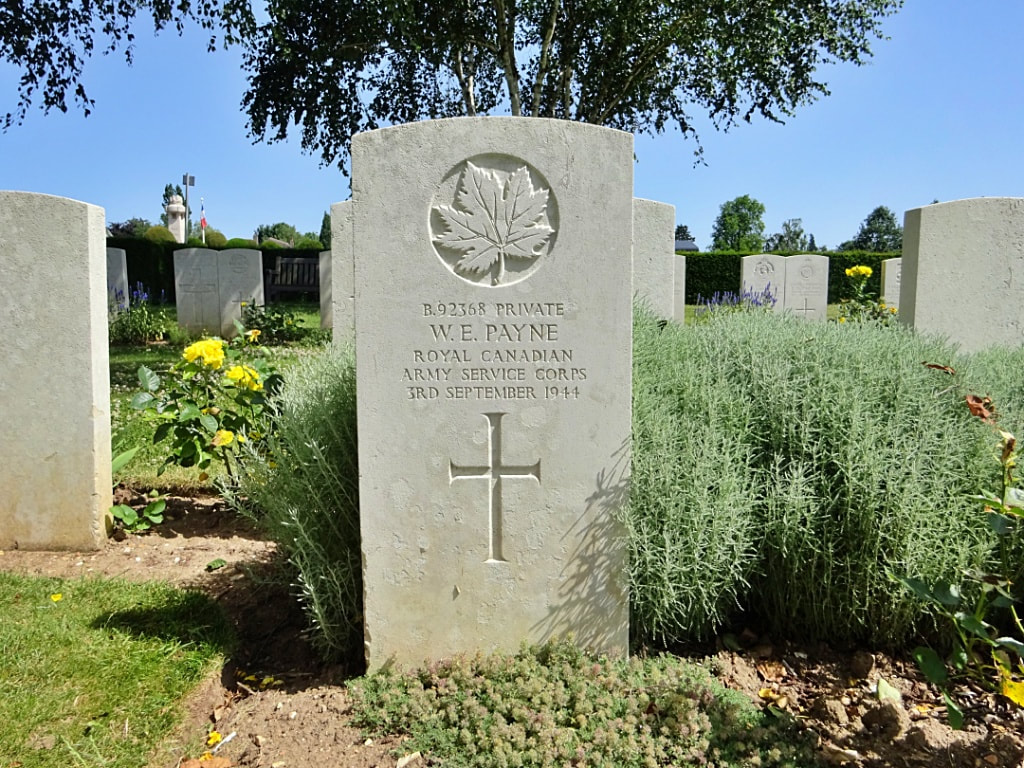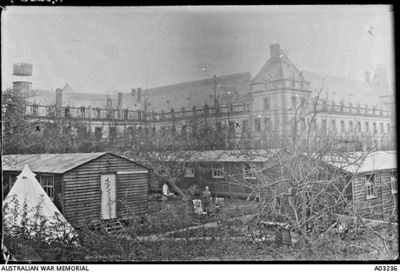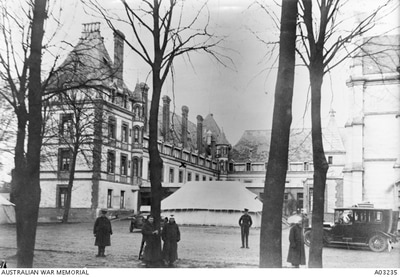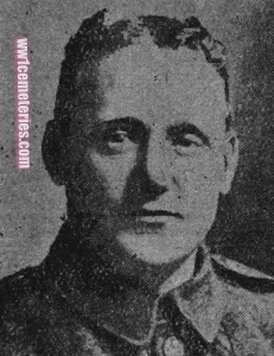BOIS-GUILLAUME COMMUNAL CEMETERY EXTENSION
Seine-Maritime
France
GPS Coordinates: Latitude: 49.46928, Longitude: 1.11059
Location Information
Bois-Guillaume is a north-eastern suburb of Rouen, on the main road to Neufchatel.
A CWGC signpost is on the road (D928) to Neufchatel at the street corner near the Mairie (Town Hall). Turn left here, and then take the second left into the Rue de la Mare des Champs. The Communal Cemetery is on the right hand side of the road, and the Communal Cemetery Extension is on the left hand side of this road. Locally, the Communal Cemetery is known as the Cimitere de la Mare des Champs.
Visiting Information
Wheelchair access with some difficulty
Historical Information
The extension adjoins Bois-Guillaume Communal Cemetery. It was begun in March 1917 and most of the burials came from No.8 General Hospital, which was quartered at Bois-Guillaume in a large country house and grounds.
There are now 362 First World War burials in the extension and one from the Second World War. The communal cemetery contains a further 321 First World War graves. Please note, a number of the graves in Rows A to G are doubles.
The extension was designed by Sir Reginald Blomfield and Captain William Clement Von Berg, M. C.
World War One Identified Casualties: United Kingdom 311, Australia 28, Canada 13, New Zealand 7, South Africa 1, Italy 1. Total 361.
World War Two Identified Casualty: Canada 1. Total 1.
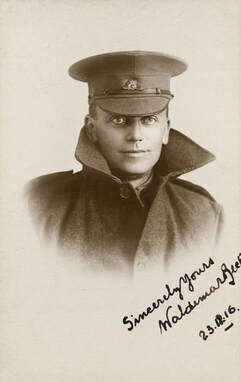
6969 Private
Waldemar Beck
16th Bn. Australian Infantry, A. I. F.
6th July 1918, aged 29.
Row D. 6B.
Son of Lawrence Edward and Caro]ine Beck, of 91, Strada Ridalfo, Sliema, Malta.
Waldemar Beck was born in Malta, attended Malta University earning the degree of Bachelor of Economics and Land Surveying and Architecture. He emigrated to WA in 1912, enlisting in the AIF on 9 October 1916. He embarked from Fremantle, WA, aboard HMAT Berrima on 23 December 1916. He died of wounds from a gunshot wound to the head on 6 July 1918 in France, aged 29.
Waldemar Beck
16th Bn. Australian Infantry, A. I. F.
6th July 1918, aged 29.
Row D. 6B.
Son of Lawrence Edward and Caro]ine Beck, of 91, Strada Ridalfo, Sliema, Malta.
Waldemar Beck was born in Malta, attended Malta University earning the degree of Bachelor of Economics and Land Surveying and Architecture. He emigrated to WA in 1912, enlisting in the AIF on 9 October 1916. He embarked from Fremantle, WA, aboard HMAT Berrima on 23 December 1916. He died of wounds from a gunshot wound to the head on 6 July 1918 in France, aged 29.
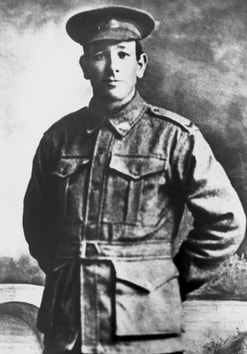
2381 Private
Harold Hartley Hannaford Cameron
"B" Coy. 50th Bn. Australian Infantry, A. I. F.
2nd October 1917, aged 34.
Row B. 26A.
Inscription "Memory Keeps Our Loved One Near Us Ever Though He Died So Far Away"
Son of John and Priscilla Cameron, of Waverley Street, Largs Bay, South Australia. Native of Mount Barker, South Australia.
A labourer from Mount Barker, South Australia, prior to enlistment, he embarked with the 5th Reinforcements from Adelaide on 21 September 1916 aboard HMAT Commonwealth for Plymouth, England. Following training in England he joined his battalion on the Western Front near Albert, France, in mid-December 1916. Pte Cameron was wounded in action on the first occasion near Pozieres and was evacuated to England for treatment and recuperation before rejoining the battalion near Outtersteene in late June 1917. Pte Cameron was wounded in action on a second occasion at Westhoek, Belgium, in late September 1917. He died of these wounds in the 8th General Hospital, Rouen, on 2 October 1917 and is buried in the Bois Guillaume Communal Cemetery Extension, France. He was aged 34 years.
Captain T. F. Breen, Registrar of No. 8 General Hospital, Rouen provided details of the wound received by Private Cameron:
"He was admitted to this hospital on the 27th September 1917, suffering from a wound of the right thigh. X Ray examination showed a large fragment of shell casing in the thigh. He was operated on 30th September 1917, the foreign body being removed and the wound drained.
On the night of the 1st October he suddenly became worse and developed signs of rapidly progressing Gas Gangrene of the thigh. He was operated on again at 4 a. m. on the morning of the 2nd, the thigh being amputated as high up as possible. He never rallied after the operation and died very shortly afterwards."
Harold Hartley Hannaford Cameron
"B" Coy. 50th Bn. Australian Infantry, A. I. F.
2nd October 1917, aged 34.
Row B. 26A.
Inscription "Memory Keeps Our Loved One Near Us Ever Though He Died So Far Away"
Son of John and Priscilla Cameron, of Waverley Street, Largs Bay, South Australia. Native of Mount Barker, South Australia.
A labourer from Mount Barker, South Australia, prior to enlistment, he embarked with the 5th Reinforcements from Adelaide on 21 September 1916 aboard HMAT Commonwealth for Plymouth, England. Following training in England he joined his battalion on the Western Front near Albert, France, in mid-December 1916. Pte Cameron was wounded in action on the first occasion near Pozieres and was evacuated to England for treatment and recuperation before rejoining the battalion near Outtersteene in late June 1917. Pte Cameron was wounded in action on a second occasion at Westhoek, Belgium, in late September 1917. He died of these wounds in the 8th General Hospital, Rouen, on 2 October 1917 and is buried in the Bois Guillaume Communal Cemetery Extension, France. He was aged 34 years.
Captain T. F. Breen, Registrar of No. 8 General Hospital, Rouen provided details of the wound received by Private Cameron:
"He was admitted to this hospital on the 27th September 1917, suffering from a wound of the right thigh. X Ray examination showed a large fragment of shell casing in the thigh. He was operated on 30th September 1917, the foreign body being removed and the wound drained.
On the night of the 1st October he suddenly became worse and developed signs of rapidly progressing Gas Gangrene of the thigh. He was operated on again at 4 a. m. on the morning of the 2nd, the thigh being amputated as high up as possible. He never rallied after the operation and died very shortly afterwards."
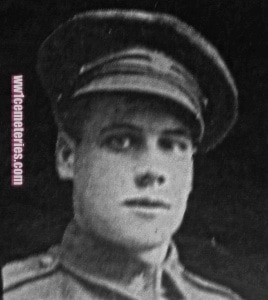
730138 Private
Joseph Hemmingway Goodare
4th Bn. Canadian Infantry
15th August 1918
Row E. 16A.
Joseph Hemmingway Goodare
4th Bn. Canadian Infantry
15th August 1918
Row E. 16A.
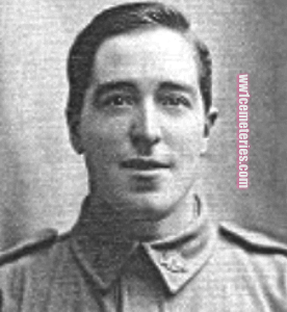
2023 Private
Clarence Melvin Humphrys
43rd Bn. Australian infantry, A. I. F.
6th October 1917, aged 24.
Row B. 26B.
Son of Elijah Thorn and Mary Humphrys of Maythorn, Hanson, South Australia.
Clarence Melvin Humphrys
43rd Bn. Australian infantry, A. I. F.
6th October 1917, aged 24.
Row B. 26B.
Son of Elijah Thorn and Mary Humphrys of Maythorn, Hanson, South Australia.
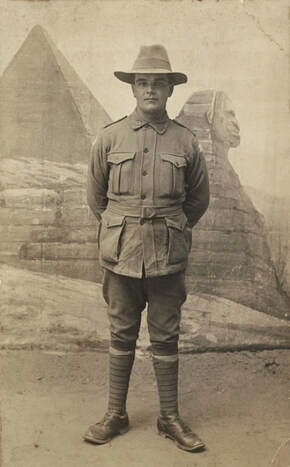
3425 Gunner
Victor Henry Pitfield
8th Australian Light Trench Mortar Battery
3rd October 1918, aged 31.
Plot F. 16A.
Inscription "He Died As He Lived Noble, Unselfish And Brave"
Son of Jacob Henry and Sophia Pitfield; husband of Lily Pitfield, of Station Street, Guildford, New South Wales. Native of Kent, England.
Studio portrait of 3425 Gunner (Gnr) Victor Henry Pitfield, 8th Australian Light Trench Mortar Battery. Born in England and living in Guildford, NSW, Pitfield enlisted on 4 August 1915. He had made a previous unsuccessful attempt, during which he was rejected on medical grounds. Pitfield served initially with 13th Battalion, then with 10th Field Artillery Brigade, 4th Divisional Artillery Column, Medium Trench mortars, and finally, from March 1918, in 8th Light Trench Mortar Battery. On 30 September 1918, he was wounded in action for the second time, and died three days later.
Victor Henry Pitfield
8th Australian Light Trench Mortar Battery
3rd October 1918, aged 31.
Plot F. 16A.
Inscription "He Died As He Lived Noble, Unselfish And Brave"
Son of Jacob Henry and Sophia Pitfield; husband of Lily Pitfield, of Station Street, Guildford, New South Wales. Native of Kent, England.
Studio portrait of 3425 Gunner (Gnr) Victor Henry Pitfield, 8th Australian Light Trench Mortar Battery. Born in England and living in Guildford, NSW, Pitfield enlisted on 4 August 1915. He had made a previous unsuccessful attempt, during which he was rejected on medical grounds. Pitfield served initially with 13th Battalion, then with 10th Field Artillery Brigade, 4th Divisional Artillery Column, Medium Trench mortars, and finally, from March 1918, in 8th Light Trench Mortar Battery. On 30 September 1918, he was wounded in action for the second time, and died three days later.

